US stocks plunged deeply at open and hit the first circuit breaker immediately, halting trading of 15 minutes. There is no clear sign of any recovery after second open yet, with DOW currently down around -10%. We’d maintain DOW is close to a long term fibonacci support level of 38.2% retracement of 6469.96 to 29568.57 at 20744.89. And a rebound should be due.
However, sustained break of 20744.89 could trigger another round of position squaring. Decline could accelerate further to 61.8% retracement at 15293.62.




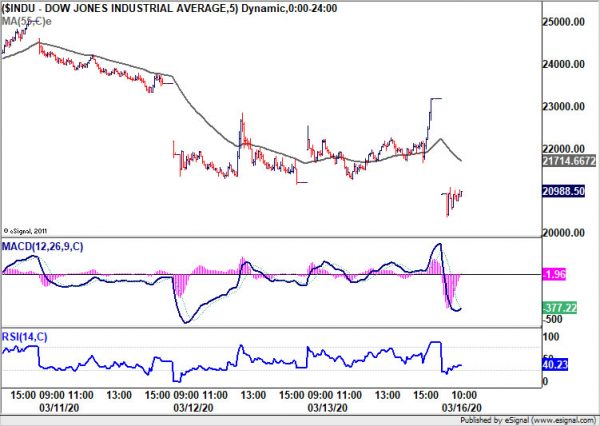
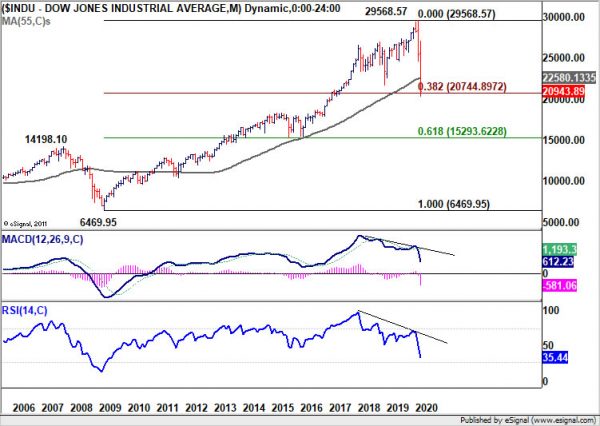
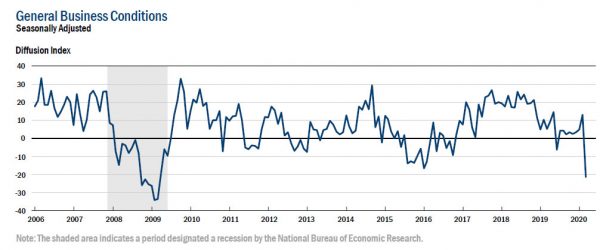
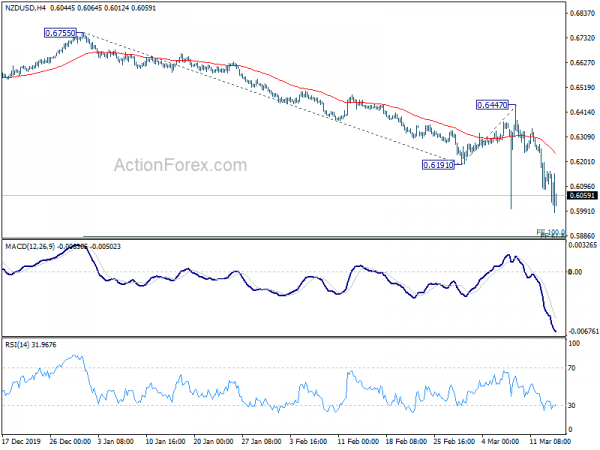
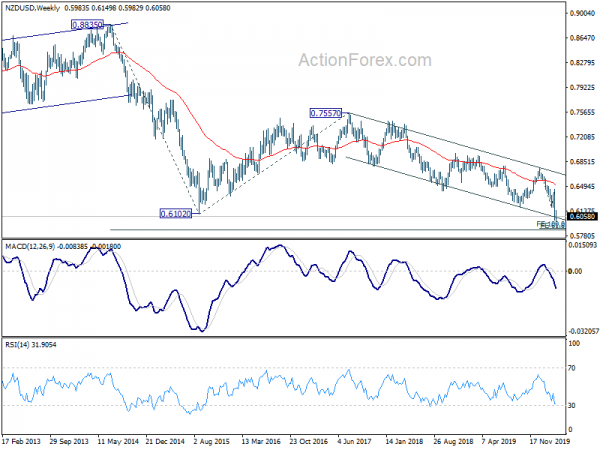
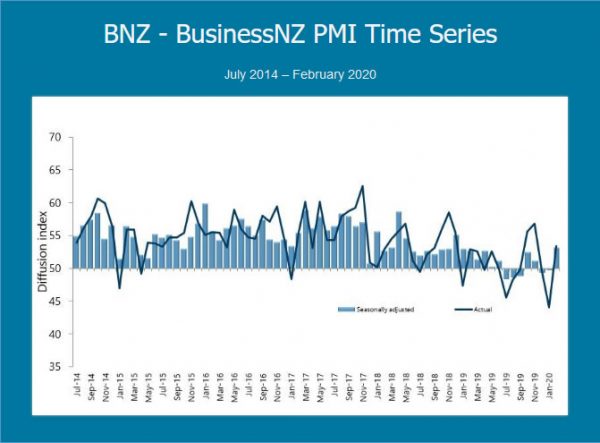
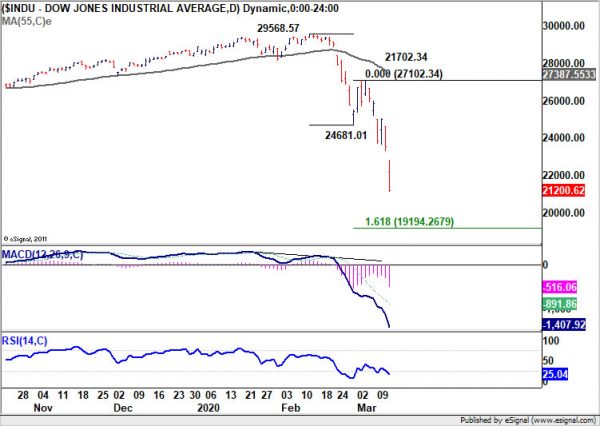
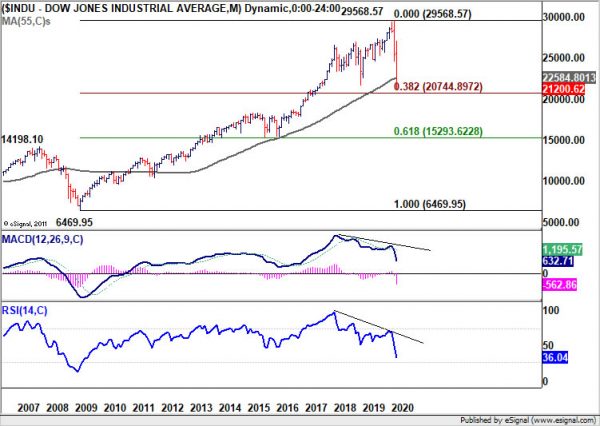
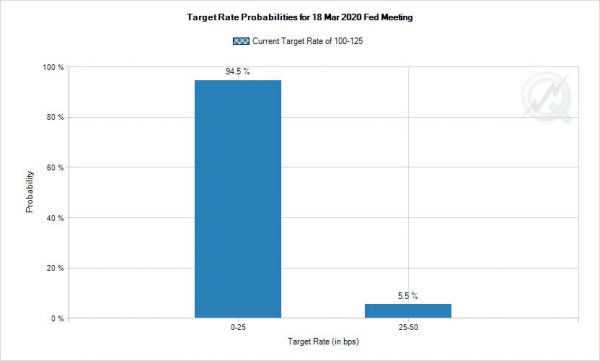
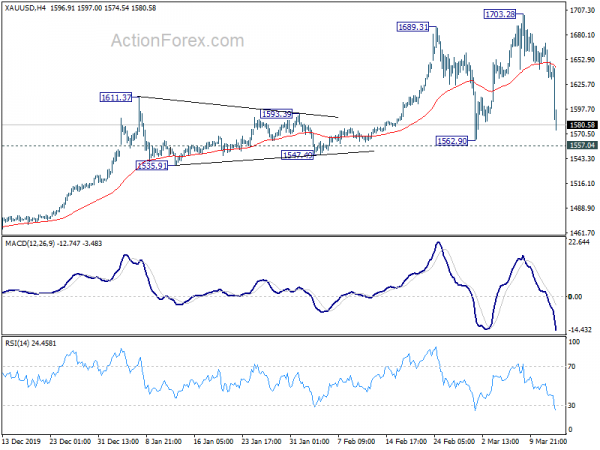
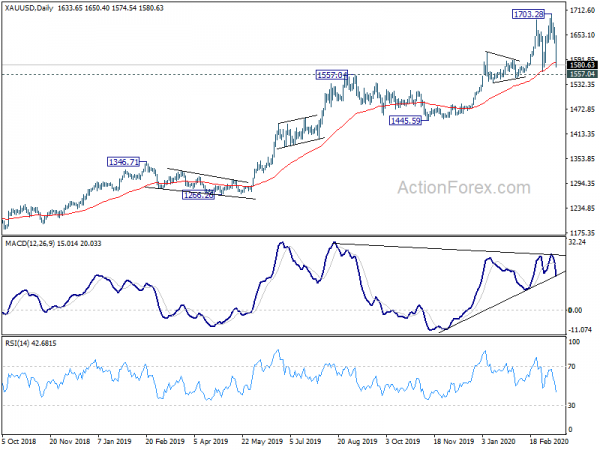
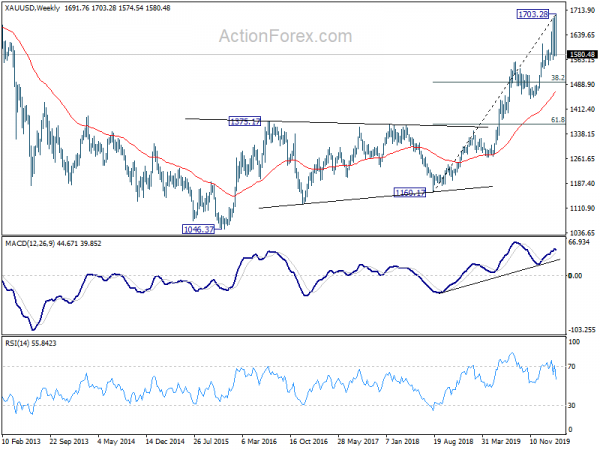

BCC downgrades UK 2020 growth forecast to 0.8% on coronavirus impacts
The British Chambers of Commerce downgraded UK 2020 growth forecast due to disruption caused by the impact of coronavirus. GDP is now projected to growth 0.8% in 2020, lowered from prior forecast of 1.0%. That would be the weakest full growth growth since 1992, outside of 2008/09 financial crisis. Growth is than projected to pick up to 1.4% in 2021 and 1.6% in 2022.
Suren Thiru, Head of Economics at BCC, said: “Early evidence of disruption to supply chains and weakening in consumer demand and business activity could mean that even in the case of a temporary shock to the economy, there may be some long-term impact on economic output – particularly if significant action is needed to combat its spread.”
Adam Marshall, Director General, added: “Coronavirus could further weaken an already stagnant UK economy, as many businesses are starting to report an impact on their cashflow and growth prospects. The Chancellor and the Bank of England have responded to the immediate challenge with measures to help firms hit by Coronavirus, and they must now ensure this support gets to businesses as quickly as possible.